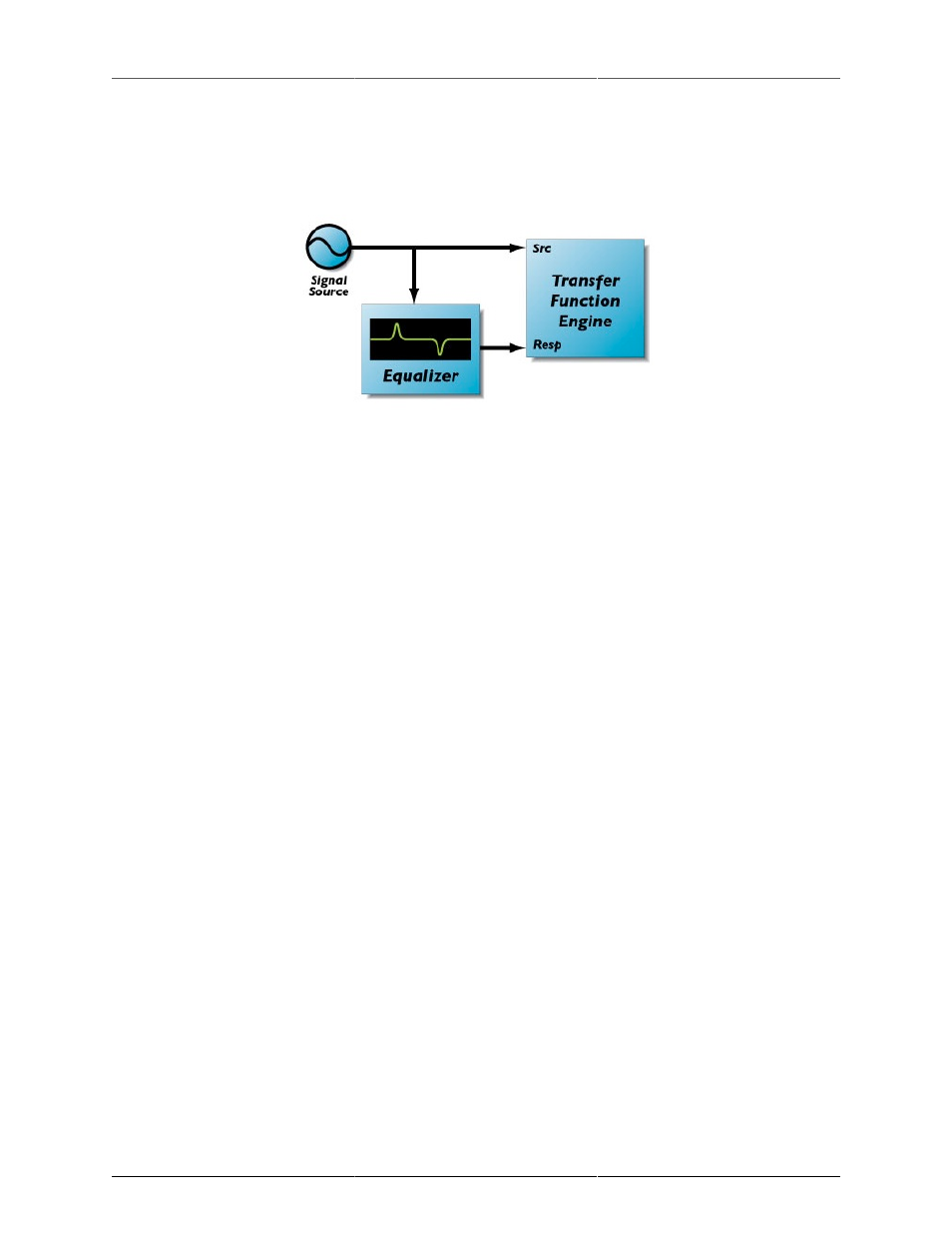Simple measurement setup – Metric Halo SpectraFoo User Manual
Page 63

The Transfer Function
63
sound reproduction system coupled with a measurement microphone (or many measurement microphones,
for that matter). The key thing to understand is that every system changes the signal that runs through it.
An example of a simple measurement is finding the transfer function of a parametric equalizer. To make this
measurement we would hook the equalizer up like this:
Figure 4.16: Simple Measurement setup
The signal source could be any source as long as it provides energy in the frequency bands that we are interested
in. If we wanted to measure the response of the equalizer from 20Hz to 20kHz, a simple 1kHz sine wave
would not be appropriate. Good source signals are:
1. Broadband musical sources. These sources have the advantage that they exercise the SUT in a way that
is consistent with the way that we expect to use the SUT.
2. Pink Noise. Pink noise has the benefit that, on average, it has a power spectrum that is consistent with
most musical program material. It also ensures that the entire audible bandwidth will be exercised. Pink
noise can be annoying when played over a Sound Reinforcement system, but should not damage any
system components (e.g. high-frequency drivers).
3. White Noise. White noise does not really match the characteristics of music but it does have a uniform
density of energy in the entire audio band. It can be used for testing electronic components but is very
annoying when used in acoustic testing. You also run the risk of damaging high-frequency drivers if
you play white noise through a sound reinforcement system at high SPL.
4. Swept sines. A sine sweep that covers the audio band to be tested will allow you to make an extremely
precise, highly noise-rejecting measurement. Swept sines do not bear any resemblance to actual musical
signals, can be really annoying when used for acoustic testing, and do not allow you to compare what
the transfer function is telling you to what you are hearing, but they do allow you to make very accurate
measurements in noisy environments. You can use this type of source signal when you have to test a
system while other aspects of a venue are still being set-up.
SpectraFoo’s Transfer Function Measurement system needs to see both the source signal and the response
signal to build the transfer function. The measurement created is a differential measurement and removes all
of the common elements of the measurement path.
You can use an external signal (like music from a CD or DAT player), a SpectraFoo capture, or SpectraFoo’s
built-in signal generator as the signal source. SpectraFoo provides an internal loopback path for capture play-
back and the internal signal generator, so you can route the internal signal source back to the transfer function
without using one of your A/D channels.
Checking your measurement equipment:
If you do use the loopback path, your system’s digital to analog and analog to digital converters (D/A/D path)
are not common to both the source and the response signal.
If the frequency response of the D/A/D path is not perfectly flat (in both phase and power) its response will
color the measured response.
